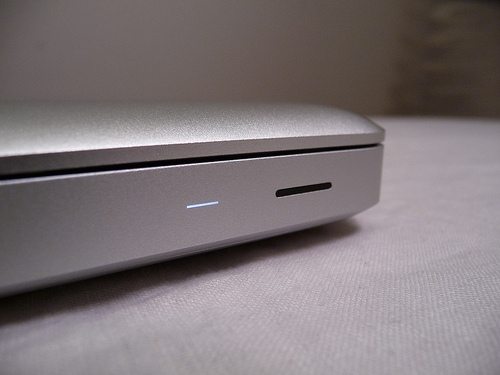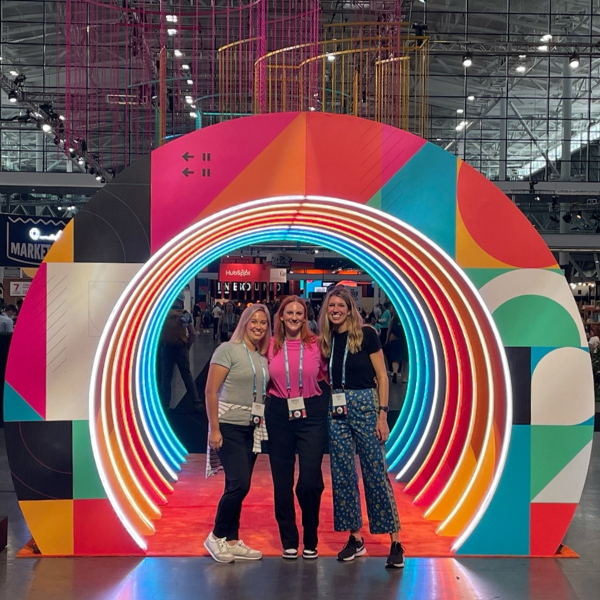
Illuminated LED on a MacBook Pro
I was watching TV the other week when the screen suddenly powered down and went blank. The status light that would normally be a solid red to indicate it was off, was flashing in a rapid, urgent succession, indicating to me that something grave had transpired.
Connected to the TV lay one of my Apple computers. The gentle, white, undulating light on the front reassuringly communicated to me that unlike its TV cousin—it was not dead—it was merely “sleeping.”
There are things we immediately, if subconsciously, find comforting or soothing and, in that moment, I found comfort in that little white light. In designing and engineering something as complicated as a computer, a status light seems like a minor detail in the grand scheme of things. But it’s details like this that can psychologically make a block of aluminum and silicon more communicative and more personal. And it took Apple two patents and hundreds of hours in R&D to make it happen.
In 2002, Apple filed a patent for a “Breathing Status LED Indicator” (No. US 6,658,577 B2). The status light is intentionally designed to simulate sleep and the patent filing described it as a “blinking effect of the sleep-mode indicator in accordance with the present invention mimics the rhythm of breathing which is psychologically appealing.”
Prior to the patent filing, Apple carried out research into breathing rates during sleep and found that the average respiratory rate for adults is 12–20 breaths per minute. They used a rate of 12 cycles per minute (the low end of the scale) to derive a model for how the light should behave to create a feeling of calm and make the product seem more human.
But finding the right rate wasn’t enough, they needed the light to not just blink, but “breathe.” Most previous sleep LEDs were just driven directly from the system chipset and could only switch on or off and not have the gradual glow that Apple integrated into their devices. This meant going to the expense of creating a new controller chip which could drive the LED light and change its brightness when the main CPU was shut down, all without harming battery life.
On more recent machines, you’ll also notice that the status light is completely invisible from the surface when the computer is in use. There’s no transparent plastic or glass where the light emanates from. The light seems to glow straight off the surface of the aluminum and, in fact, that’s exactly what it’s doing.
This feat of engineering is achieved though Apple’s “Invisible, light-transmissive display” (No Us. 7,880,131). During the manufacturing process of the computer body, a CNC machine first thins out the aluminum. Then a laser drill creates small perforations for the LED light to shine through, creating the illusion of a seamless surface when the light is off.
Other computer manufacturers have tried to mimic Apple, and add a similar sleep status feature to their computers. They used faster rates for their indicator which is more indicative of strenuous exercise rather than rest.
Attention to detail is what makes Apple products feel so impeccable. The team there doesn’t just pore over financial spreadsheets and personnel issues as most companies do. They don’t just think about design, they obsess over it to the smallest details. There are many companies that have the talent and the resources to potentially mimic Apple’s success, but without getting the details right, it ends up just looking like strenuous exercise—inelegant and labored.






